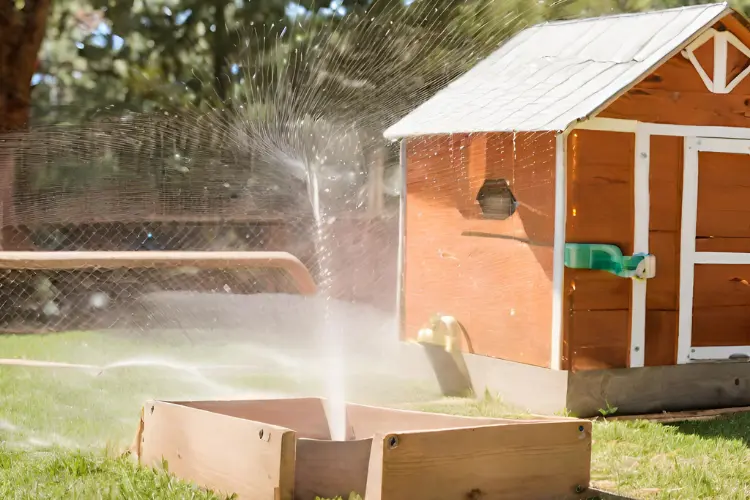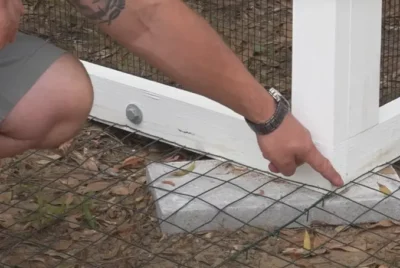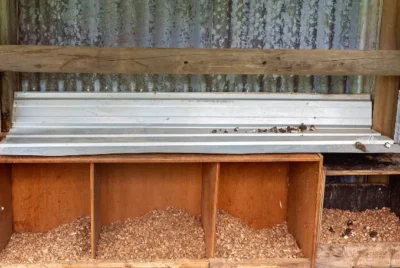How Motion-Activated Sprinkler Systems Work in Coop Defense
Protecting poultry coops from potential threats such as pests and predators is a top priority for coop owners. Traditional defense methods like traps have their limitations, and chemical deterrents can be harmful to both the environment and the animals. However, there is a modern and humane solution that is gaining popularity among coop owners: Motion-Activated Sprinkler Systems.
This article will explore how these innovative systems work in coop defense and why they have become a go-to choice for safeguarding poultry coops.
What Is Motion-Activated Sprinkler Systems?
Motion-activated sprinkler systems are innovative devices designed to deter and protect outdoor areas, such as gardens, lawns, and poultry coops, from unwanted intruders like pests, animals, and even trespassers. These systems use motion sensors to detect any movement within a specified range, and upon detection, they trigger a water spray from strategically positioned nozzles.
The sudden burst of water serves as a surprising and effective deterrent, discouraging animals or individuals from entering or approaching the protected area
Enhance your security and keep unwanted intruders at bay with the 4-Pack Orbit 62100 Yard Enforcer Motion-Activated Sprinkler. These smart sprinkler systems provide a humane and efficient way to protect your outdoor spaces. Don’t wait – safeguard your garden, lawn, or poultry coop today. Get the Orbit 62100 Sprinkler 4-Pack now!
How These Systems Differ from Traditional Defense Methods
Unlike conventional approaches such as fences, traps, or chemical deterrents, these systems provide a non-lethal, automated, and hands-off solution.
One significant difference lies in their reliance on technology and sensors. While traditional methods often require constant monitoring, maintenance, and manual intervention, motion-activated sprinkler systems operate autonomously. They only activate when their motion sensors detect movement, reducing the need for constant oversight.
Moreover, these systems use water as the primary deterrent, which is environmentally friendly and safe for animals and humans. Traditional methods may involve risks to non-target species or even harm to pets.
Additionally, motion-activated sprinkler systems are easily adjustable, allowing you to fine-tune settings to target specific threats effectively.
Read also: Electric Poultry Fencing: Installing a Shocking Deterrent Against Chicken Predators

Key Components of a Motion-Activated Sprinkler System
A motion-activated sprinkler system typically consists of several key components that work together to detect motion and deliver a burst of water as a deterrent. These components include:
Motion Sensor
The motion sensor is the central component that detects movement within a specified range. It uses passive infrared (PIR) technology or other detection mechanisms to identify heat and motion. When an object or animal enters the sensor’s field of view, it activates the system.
Water Source
A water source is necessary to supply the sprinkler system with water. Depending on the system’s design, this can be a garden hose connected to a tap or an alternative water supply, such as a rain barrel.
Hose and Nozzles
The water delivery system consists of a hose connecting to the water source and strategically positioned nozzles or spray heads. When the system is triggered, these nozzles release a burst of water, creating a deterrent spray.
Pump or Valve
Some systems include a pump or valve to pressurize the water, ensuring an effective and forceful spray. This component varies depending on the system’s design and whether it requires additional water pressure.
Control Unit
The control unit is the system’s brain, allowing you to customize settings such as detection range, spray duration, and activation times. It may have a display panel and buttons for adjusting these parameters.
Power Supply
Motion-activated sprinkler systems require a power source to operate the motion sensor and control unit. Depending on the system’s design, they typically run on batteries, solar power, or an electrical outlet.
Support Structure
Depending on the installation location, a support structure like a stake, tripod, or mounting bracket may be needed to position the motion sensor and sprinklers at the desired height and angle.
Timer or Scheduler (Optional)
Some advanced systems may include a timer or scheduler feature, allowing you to set specific times when the system should be active or inactive. This feature can help conserve water and prevent unnecessary activations.
Maintenance Access
Systems should have provisions for easy maintenance, such as access points for cleaning nozzles, checking for clogs, and ensuring the proper functioning of components.

How Motion-Activated Sprinkler Systems Work
Detection Mechanisms (e.g., motion sensors)
Motion-activated sprinkler systems are equipped with motion sensors, typically using passive infrared (PIR) technology. These sensors are designed to detect heat and movement within a specified range. When an object or animal, such as a pest or intruder, enters the sensor’s field of view, it activates the system.
Water Delivery System (e.g., nozzles, hoses)
The water delivery system delivers a burst of water as a deterrent. It consists of a hose connected to a water source, such as a garden hose or rain barrel, and strategically positioned nozzles or spray heads. When activated, water is pumped or allowed to flow through the hose and expelled through the nozzles in a controlled spray pattern.
The Role of Timers and Settings in Customization
Motion-activated sprinkler systems often include a control unit with settings that allow you to customize the system’s behavior. These settings typically include:
- Detection Range: You can adjust the sensor’s sensitivity to determine how far it can detect motion.
- Spray Duration: When the system is triggered, you can set how long the water spray should last.
- Activation Times: Some systems offer timers or scheduling features that allow you to specify when the system should be active or inactive, which can help conserve water.
Activation Triggers (e.g., animal movement)
The primary trigger for these systems is detecting motion within the sensor’s range. When an animal or intruder moves into the designated area, the motion sensor signals the control unit to activate the water delivery system. The sudden burst of water is a startling and effective deterrent, discouraging the intruder from approaching or remaining in the protected area.
Advantages of Motion-Activated Sprinkler Systems in Coop Defense
Non-Lethal Deterrent
Unlike traditional defense methods that may harm or kill pests and predators, motion-activated sprinkler systems provide a humane way to deter them. The sudden burst of water startles and discourages intruders without causing harm, making it an ethical and animal-friendly choice.
Low Maintenance
These systems typically require minimal maintenance. Regular tasks may include checking for clogs in the nozzles and ensuring the system’s components are functioning correctly. Motion-activated sprinkler systems are relatively hassle-free compared to traps or chemical deterrents, which need constant attention.
Automation and 24/7 Protection
Motion-activated sprinklers operate autonomously, triggered only when motion is detected. This means they provide round-the-clock protection without constant monitoring or intervention, giving you peace of mind.
Customizable Settings
Most systems have adjustable settings, such as detection range, spray duration, and activation times. This customization allows you to tailor the system to your needs and optimize its effectiveness.
Environmentally Friendly
These systems use water as an environmentally safe and readily available deterrent. Unlike chemical repellents that may have ecological consequences, motion-activated sprinkler systems have a minimal environmental impact.
Versatile Application
Motion-activated sprinkler systems can be used in outdoor spaces, not just coops. They are effective for protecting gardens, lawns, and other areas from a wide range of pests and wildlife, offering versatility in their application.
Cost-Effective
While there is an initial cost in buying and installing the system, motion-activated sprinklers can be cost-effective in the long run. They reduce the need for ongoing expenses associated with traditional methods, such as pest control services or continuous replacement of traps and chemicals.
Safe for Pets and Humans
Motion-activated sprinkler systems pose no danger to pets or humans. They are designed to target wildlife and intruders, leaving family pets and coop owners unaffected.
Reduced Property Damage
By deterring pests and predators, these systems help prevent property damage, such as damage to crops, gardens, and coop structures. This can save you money and time in repairs and replacements.
Read also: How To Maintain Chicken Coop for Long-Term Predator Protection

Are Motion-Activated Sprinklers Effective during Nighttime?
Motion-activated sprinklers can be effective during nighttime, but their performance may depend on various factors. These systems often have motion sensors, including infrared sensors, which can work in low-light conditions or complete darkness.
However, ambient lighting, animal behavior, and system settings may still influence their effectiveness. You can enhance nighttime effectiveness by adjusting sensitivity and spray duration settings, using additional lighting around the coop area, and considering the behavior of nocturnal pests and predators.
Motion-activated sprinkler systems can provide valuable nighttime protection for coops and outdoor spaces with the right setup and adjustments.

Get Your Motion-Activated Sprinklers
Motion-activated sprinkler systems are a modern and effective solution for coop defense. They offer a humane, low-maintenance, and customizable approach to deter pests and predators from poultry coops.
You can enjoy peace of mind knowing that your feathered friends are safe and protected, thanks to these innovative systems that utilize technology and water to safeguard their valuable assets.





